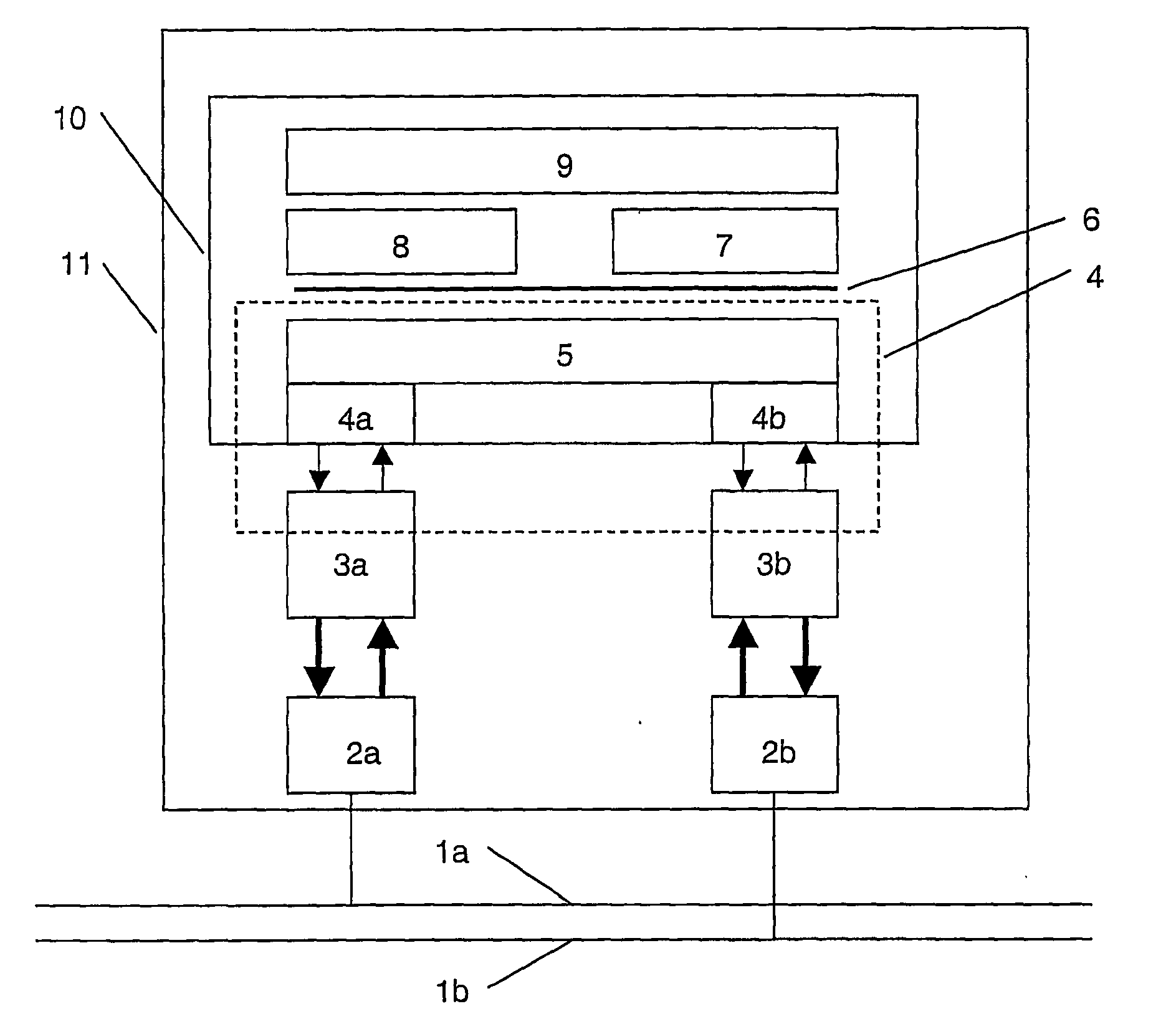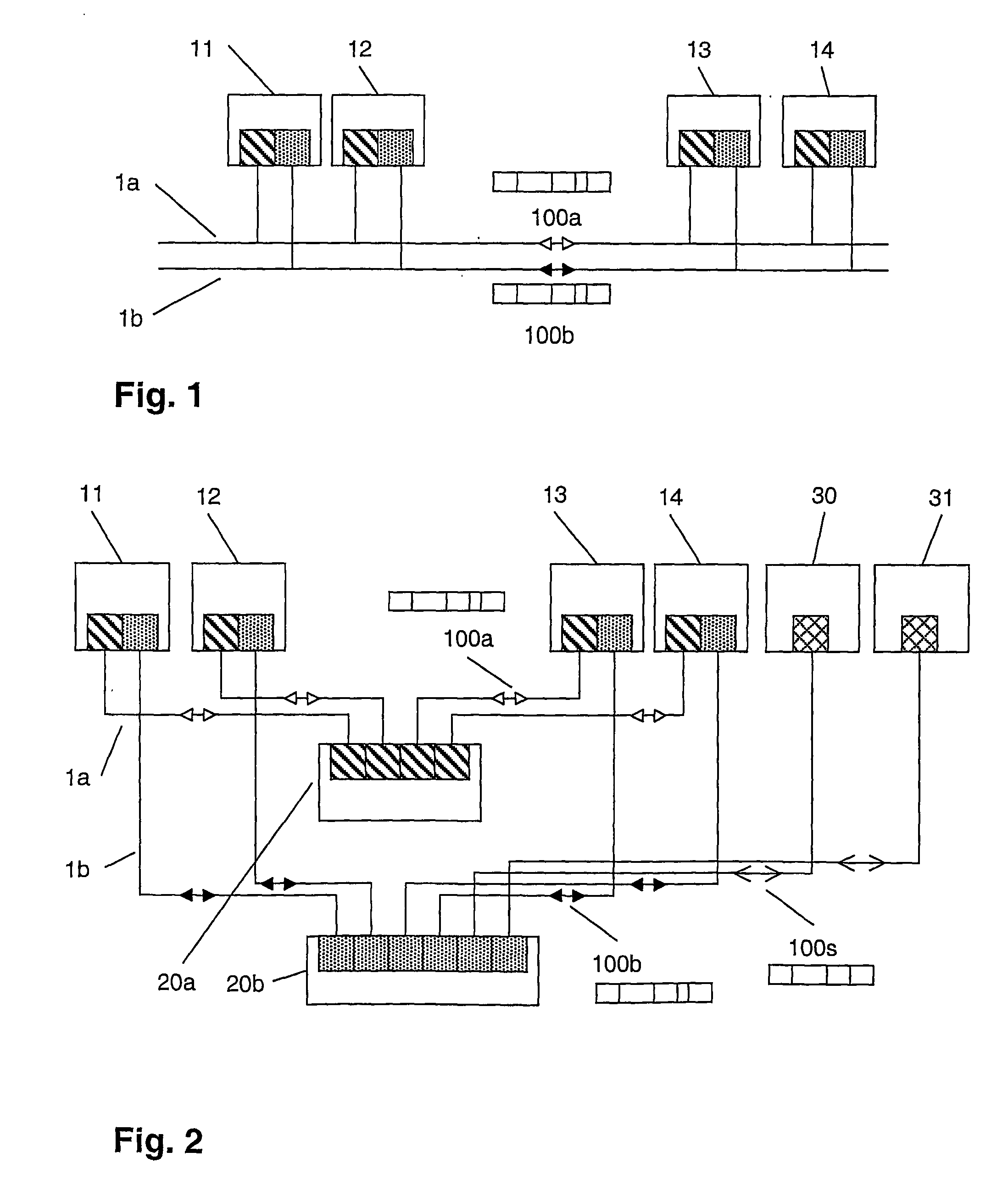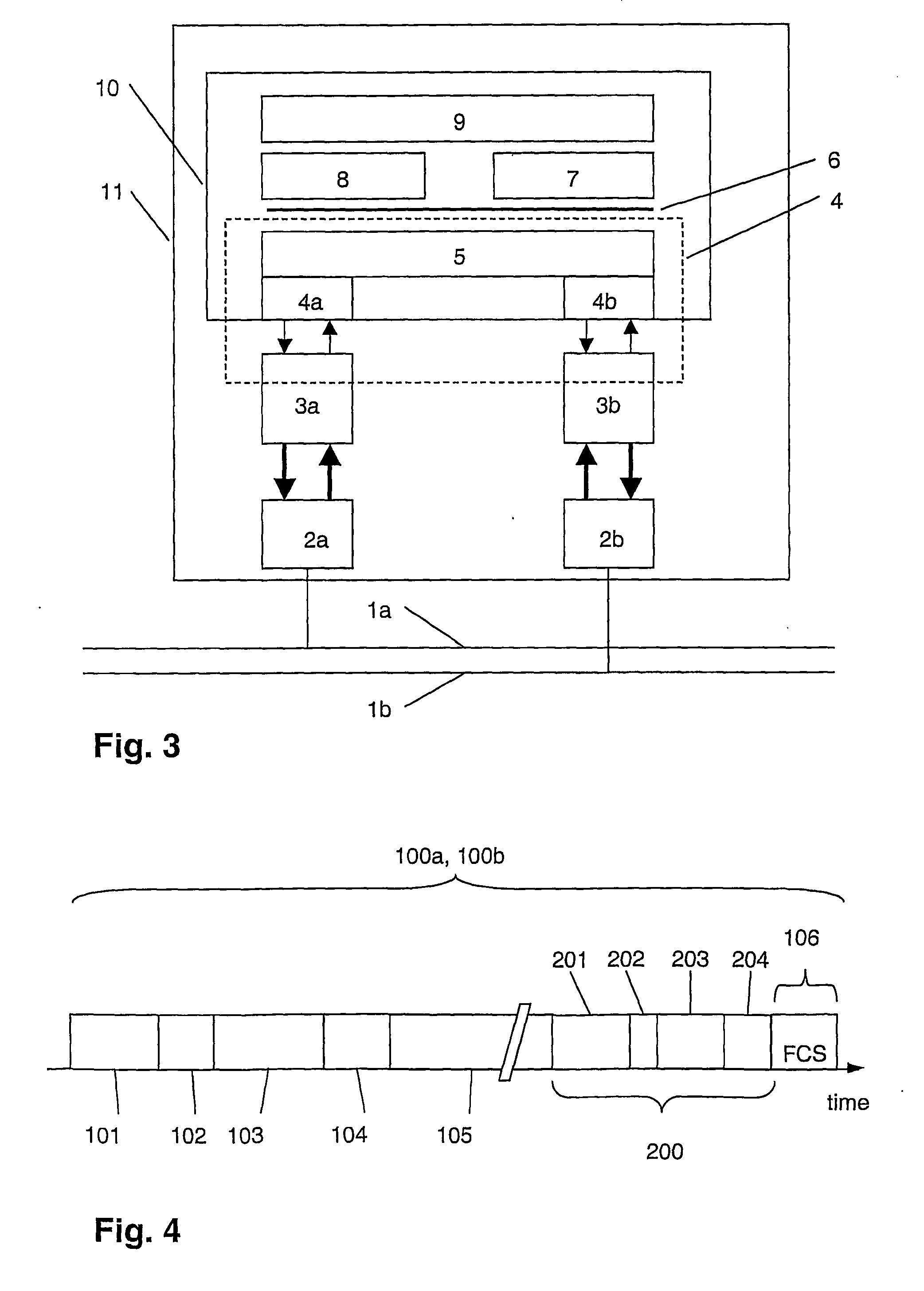Reception of redundant and non-redundant frames
a frame and non-redundancy technology, applied in the field of communication networks, can solve the problems of unreliable information about the frame length, undetected errors, and inability to provide for an active detection of singular frames deprived of said data identifiers,
- Summary
- Abstract
- Description
- Claims
- Application Information
AI Technical Summary
Benefits of technology
Problems solved by technology
Method used
Image
Examples
Embodiment Construction
[0025]FIG. 1 shows a bus topology representing e.g. a field-bus according to IEC 61158 and FIG. 2 shows a switch topology of a communication network representing e.g. an Ethernet-type local area network (LAN). In both cases, two or more devices 11, 12, 13, 14 are connected by two lines 1a and 1b that are completely separated from each other to avoid a common source of failure. In the present context, the term line does not only describe a point-to-point physical link, but generally refers to one of two redundant paths that can be electrical, optical or based on another technology. As will be apparent from the following detailed description, the disclosure is independent of the number of connecting elements, hubs or switches and their respective arrangement, e.g. in a loop or tree topology, and is applicable to any type of network and communication media, as well as any number of redundant lines and even only partially, i.e. section-wise, redundant lines.
[0026] A sending device or s...
PUM
 Login to View More
Login to View More Abstract
Description
Claims
Application Information
 Login to View More
Login to View More - R&D
- Intellectual Property
- Life Sciences
- Materials
- Tech Scout
- Unparalleled Data Quality
- Higher Quality Content
- 60% Fewer Hallucinations
Browse by: Latest US Patents, China's latest patents, Technical Efficacy Thesaurus, Application Domain, Technology Topic, Popular Technical Reports.
© 2025 PatSnap. All rights reserved.Legal|Privacy policy|Modern Slavery Act Transparency Statement|Sitemap|About US| Contact US: help@patsnap.com



